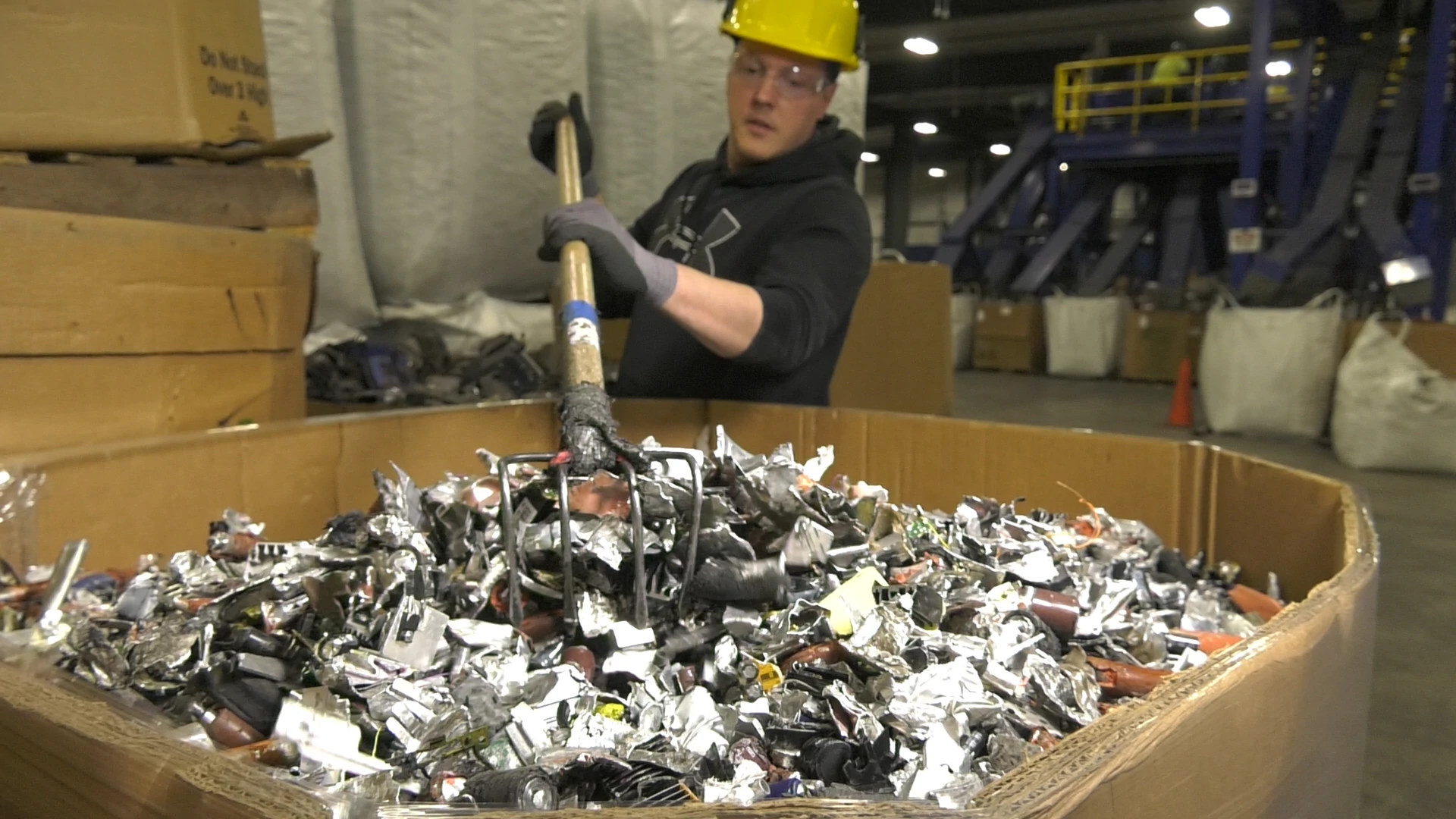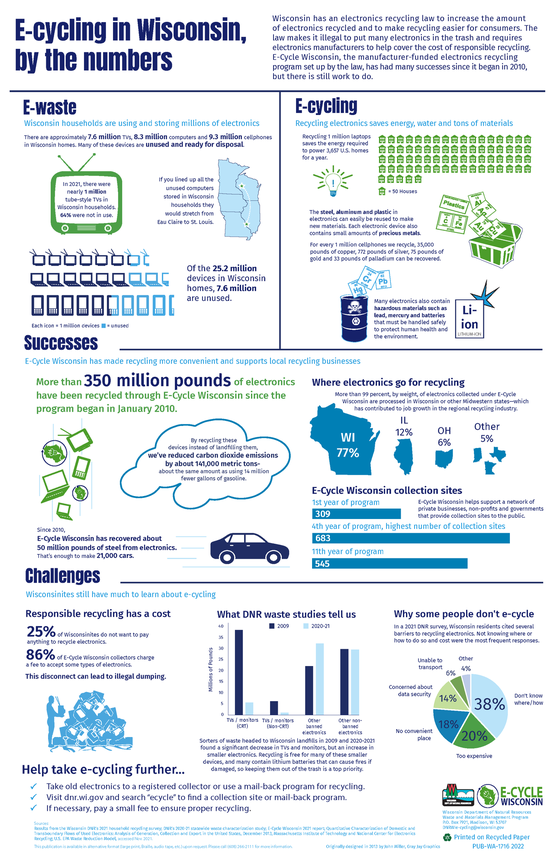Contact: Sarah Murray, DNR E-Cycle Wisconsin Coordinator
sarah.murray@wisconsin.gov or 608-234-0533
DNR Survey Finds More Households Recycling Or Reusing Unwanted Electronics
 A new DNR survey shows more households are recycling or reusing unwanted electronics instead of storing them.
Photo credit: Wisconsin DNR
A new DNR survey shows more households are recycling or reusing unwanted electronics instead of storing them.
Photo credit: Wisconsin DNR
MADISON, Wis. – The Wisconsin Department of Natural Resources (DNR) today announced a new department survey finds there were more households recycling or reusing unwanted electronics instead of storing them in 2021.
The survey highlights how many electronics are in Wisconsin households, trends in consumer awareness, electronics recycling behavior and barriers that prevent residents from recycling electronics. Although recycling or reusing unwanted electronics increased since 2018, the last time this survey was conducted, many residents still face barriers to recycling electronics.
Of the estimated 25.2 million devices in Wisconsin households, 7.6 million devices were not in use –about 17% of TVs, 26% of computers and 44% of cellphones. This was an 18% decrease from the estimated 9.3 million unused devices in the DNR’s 2018 survey. Among households that had stopped using a device during the previous year, more chose to recycle or reuse, rather than store, the devices compared with 2018.
“We were really pleased to see that fewer households were storing unwanted electronics,” said Sarah Murray, DNR E-Cycle Wisconsin Coordinator. “But a lot of us still have old cellphones, computers and TVs in drawers, closets and basements. Now is a good time to look for options, since more collection events are hosted in the spring and summer. And you can throw in all those tangled cords, cables and accessories – they’re also recyclable.”
The DNR has conducted six statewide household recycling surveys since 2010, when Wisconsin’s electronics recycling law took effect. The law included a disposal ban for certain types of electronics and established E-Cycle Wisconsin, a manufacturer-funded program administered by the DNR that helps support a statewide network of electronics collectors and recyclers. As of 2021, households and schools have recycled more than 350 million pounds of electronics through E-Cycle Wisconsin.
Among households that had computers or cellphones they no longer wanted during the previous 12 months, the most common action was to put them in storage. About half had stored unwanted cellphones and 56% had stored unwanted computers. For TVs, the most common action was to recycle or reuse them (60% of respondents), compared with 37% who stored unwanted TVs. Only a small percentage of respondents reported putting a cellphone (2%), computer (1%) or TV (3%) in the trash.
Among those who said they were unable to recycle electronics, the most common reason was not knowing where or how to do so. Many also listed cost as a key barrier to recycling electronics. While many collection sites still take some items for free, most charge a fee to recycle some items, including TVs and monitors.
“Responsible electronics recycling has a cost,” Murray said. “Recyclers must properly manage the hazardous materials and lithium-ion batteries found in many electronics and protect data security. Manufacturer funding covers some of that cost, but consumer fees help make up the difference as well as cover collection and transportation costs.”
The DNR maintains an up-to-date, interactive list of E-Cycle Wisconsin collection sites and mail-back programs, which allows residents to map nearby collection sites, look up locations by county and find free trade-in and mail-back programs.
The DNR has also launched a new E-Cycle Wisconsin Electronics Collection Grant Program, which will provide small grants for collection sites or events in areas that currently lack consistent electronics recycling options. The application deadline is April 29. More details on the program are available on the E-Cycle Wisconsin Information for Collectors page.
“The DNR will continue to look for ways to work with communities, share recycling information and support responsible recycling,” Murray said. “We’ve had many program successes and will continue to address barriers and challenges to recycling.”


